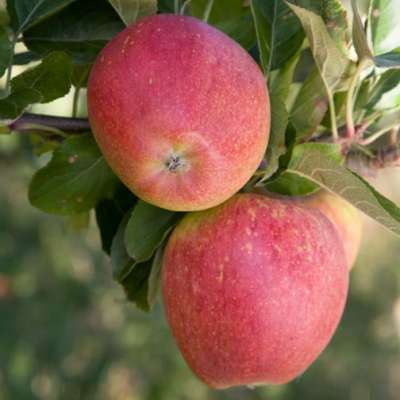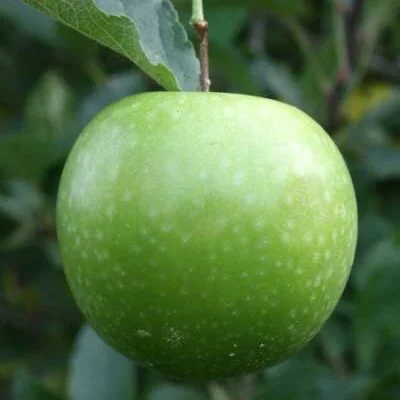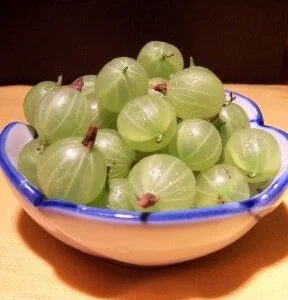Your basket is currently empty!
Summer pruning is one of the most enjoyable tasks in the fruit garden but why should we prune at all? What is the purpose of summer pruning and why should we prune now rather than leave it all until the winter?
By pruning in summer we encourage the tree to make better growth, rather than more growth, as is sometimes the case with winter pruning. Summer pruning makes our trees produce more fruit and less wood.
It is with the trained fruit trees that summer pruning is the most important and advantageous. Easpaliers, fans, stepovers, cordons and columns, but don’t forget your trained soft fruit as well which will thrive under the same principal.
The younger a tree is the more important it is to summer prune. It is crucial if we intend to promote our trees to grow into a special shape or produce heavy crops in a special way. With a mature tree you mainly prune to maintain the work of previous years.
The young bush trees on dwarfing rootstocks also require our attention, once the basic framework of branches has been formed. We now want to encourage our trees to produce an abundance of fruit buds.
Summer pruning has the advantage of reducing shade. The more sun we can get to our fruits then the better they will be, more flavoursome and more highly coloured. Have you ever noticed that with a large old tree, the most colourful and pleasurably flavoured fruits invariably come from the top of the tree, where they have been sunbathing? It’s another reason why most commercial samples of Bramleys Seedling sold in supermarkets are almost all-green because commercial orchards are intensively farmed and planted and allow for little sunlight to reach the fruits. A Bramleys real character is actually quite highly coloured but you would not guess it from shop bought samples these days. Down in the heavy shade of the lower branches fruits are often smaller and paler in colour, lack flavour & there are fewer of them.
If you belong to a gardening club you will already know that there are two extremes of pruners in the garden. Those that attack everything in sight as if on a mission and give their trees a short back and sides at every opportunity, and there are those timid pruners who will only nibble at an occasional branch because they are frightened of making an incorrect cut. Both methods are equally wrong.
The rewards of efficient pruning in summer are beyond belief if you have never experienced them. Healthier and better looking trees come naturally and the quality and quantity of fruit is beyond compare.
In order to summer prune effectively you need to know why, when you cut a branch, it has the effect it does.
With summer pruning we are concentrating on these new side growths that are coming from the main branches or stem. They will now be about 7-9″ long on many of our trees and at the perfect stage for pruning. But what happens when we prune them?In simple terms a leaf manufactures food for our trees. With less food to support any new growth a tree compensates for itself when leaves are removed and puts less growth into the root system. This in turn reduces the amount of food that can be stored and effectively released the following spring, and as a consequence is curbing the trees growth.
If we are trying to train and grow a tree in a confined space as with cordons, Espaliers and columns etc, summer pruning is an essential aid. It helps our tree to help us in a natural way. The other purpose of summer pruning is to produce more and better fruits.
By pruning back the new side growths at this time, we encourage the development of more buds that are at the base or hidden in the bark around the base of the side laterals. Pruning forces these dormant buds into growth. Sometimes further side growths are produced but often it is fruit buds in a prolific way. As you become more experienced you will be able to tell the difference between fruit buds and leaf buds.
In the early autumn examine the side growths that you have shortened and you will be surprised at how well furnished with fruit buds they are.
The extra benefit we get from summer pruning is that, as our trees get older, more fruit buds are naturally produced and less side growths, so very important with our single stem columnar trees and the sturdy arms of our espaliers and stepovers.
Always remember that the growth that needs your attention is the semi-mature new side growths. Wait until they are about 7-8″ longand then prune them back by at least half, cutting to just beyond a bud. The more experienced will prune these growths back very hard, almost down to the base as the harder you prune, the more of those dormant fruit buds will be forced into growth.
Summer pruning usually starts in June, check your trees every 3 weeks until growth has finished in the early autumn. Prune all of the side growths but not the leader.
Summer pruning is simplicity itself, but so very effective.






